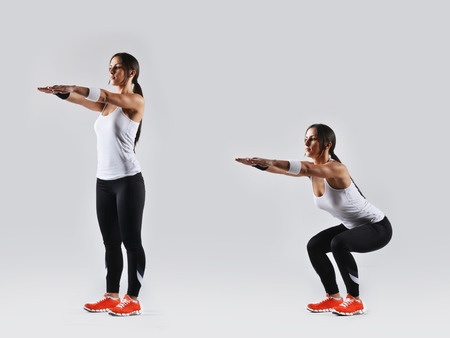What Are Your Feet Telling You?
WHAT ARE YOUR FEET TELLING YOU?
We have all heard that a solid house must begin with a strong foundation. It is the same with our bodies. It all starts with the feet.
Ailments that develop over time can be traced back to weakness, imbalance and tightness in our feet and ankles. This applies when lifting weights. Our feet tell us a great deal during large movements such as squats and deadlifts.
If we are really paying attention to how our feet feel or where we feel pressure during movements, it can give us a good plan of attack for correcting technique and reducing pain in the knees and lower back.
Let’s talk a little about footwear. It is difficult to listen to the feet when we throw another joint under them, such as cushioned soled shoes. It is preferable to wear thin soled shoes or even stocking feet when lifting weights. These options allow for a firm platform to the ground.
Let’s begin with the squat.

When performing a squat, you should push through the middle of your foot rather than the heel or balls of your feet. You should plant every “corner” of your foot firmly into the ground. If you push through the heel, you are not engaging your quads enough and you may fall. When pushing through the balls of your feet, you are not engaging your hips and glutes and will feel pressure and maybe pain in your knees.
Something to take into consideration is the flexibility of your ankle. If your heels rise as you lower into a squat, the issue is most likely flexibility. Tight ankles and calves will not allow you to stay upright enough and can cause lower back discomfort. A great way to combat this issue is to add in seated calf raises at a tempo of 1-6-1-0 for 6-8 reps.
If the feet turn out while squatting in a narrow stance, then the ankles are most likely the issue. If they turn during a wide stance squat, hips can be the issue.
Let’s move on to the deadlift.
This move depends slightly on the individual. If you are a tall lifter, your setup in a deadlift will consist of your knees being tracked forward a bit. It’s the opposite for the short lifter. A tall lifter will need to push mid-foot first to break from the floor, but the pressure will transfer quickly to the heel as the bar is pulled into the body and the hips and glutes take over. The short lifter may be able to get in a great setup with most of the pressure in the heel. No lifter, tall or short, should ever feel pressure in the balls of their feet. This means the setup is an issue and the bar path will be incorrect and unforgiving. The farther the bar is from the body, the heavier it will feel.
A good guideline to know is that with posterior chain movements such as RDLs, hip thrusts and good mornings, the pressure should always be in the heel. In most quad dominant movements, you should try to be square on the foot. Examples of quad exercises include split squats, lunges and squat machines.
There are exceptions. For example, with sissy squats or Peterson leg presses, the pressure is purposely put on the balls of the feet to train the squads specifically. For example, when doing the leg press with feet high and pressure on the heels, it becomes a posterior chain move. With the feet lower and pressure on the mid=foot, your quads will see most of the action.
Try to remember:
- Pressure in heels = glutes, hamstrings
- Pressure in balls of feet = quads
- Pressure in mid-foot = healthy mixture of both
- Look first at a client’s or training partner’s feet during movements to know what’s activating or not, or what is tight or weak
- Focus on what you feel in your feet during lower body movements




